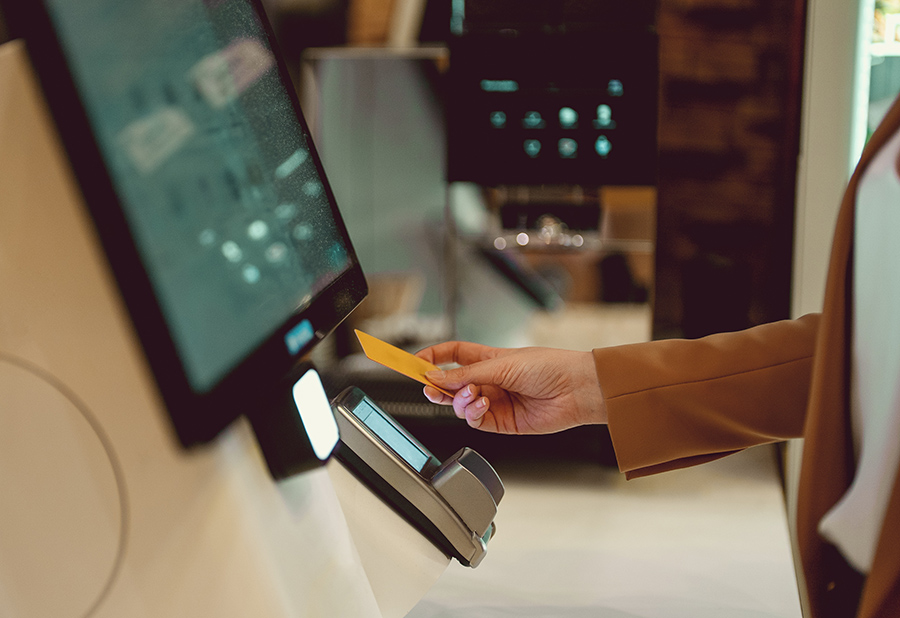5 Features to Look For in a Payment Processing System
The choice of payment processing platform has become an increasingly important decision for business owners. Consumer behaviors have changed dramatically since 2020. Contactless payment adoption grew significantly, from 26% in 2019 to over 80% in 2022. The QR code payment market began an upward trajectory that year that analysts predict will continue at a 16.2% CAGR from 2023 to 2030. Additionally, mobile wallet transactions in the store are growing, increasing 9% in Q2 2022 alone, and showing consumers are open to alternative payments at the point of sale.
Merchants need a payment processing platform capable of delivering what consumers demand today and future-proof enough to support the payment methods they want to use in the coming months and years. To make sure you’re using the optimal solution for your business, evaluate payment processing platforms based on these five criteria.
1. Modern Technology
A good place to start when evaluating a platform is with its capabilities. Investigate the types of payment methods it supports, and also ask what’s on its development roadmap. You can also get some insights from looking at recent innovations and whether the payments provider has kept up with competitors during rapid payments disruption in recent years.
A payment processing platform that keeps up with trends – or helps to make them – will give your business the ability to provide the experiences consumers want. And great experiences can help you build customer loyalty and more revenue.
2. Flexibility
Ensure your payment processing platform allows you to take control of payment transactions. It should allow you to create payment experiences that delight your customers with speed and convenience. But it should also support options that can save your customers money – and help you offset payment processing fees.
A payment processing platform that supports surcharging and dual pricing enables you to add a surcharge (approximately the amount of payment processing fees) when customers pay with a credit card. Dual pricing allows you to show options on the terminal so your customer can see how much they’ll pay if they use cash, credit card, or another option.
A platform that gives you these options can help you save money while still providing your clients with the option to use digital payment, resulting in greater customer satisfaction and a healthier bottom line.
3. Security
It’s vital to ensure the payment processing company complies with all Payment Card Industry (PCI) and Card Acquiring Service (CAS) rules and security requirements. Comprehensive security includes tokenization, which replaces human-readable card data with randomly generated alphanumeric characters. You can use tokens to “remember” customers so, for example, they don’t have to enter their payment data each time they make a purchase online. Or, you can use tokens to associate activity with a certain customer so you can personalize offers. A strong security strategy also offers encryption, which replaces data with “ciphertext” that only the processor can decrypt with an encryption key. Point-to-point encryption (P2PE) is PCI-certified to protect card data when the consumer inserts or taps a card, when data is in transit, and when it travels to different players in the payment approval process.
However, payment processors can do more to keep payment data safe. For example, they can support fraud detection solutions that help merchants spot malicious activity or flag consumers with a history of chargebacks and illegal activity.
Overall, a payment process that prioritizes security will benefit your business by helping to prevent data breaches and fraud – and the impacts they can have on your reputation and your profits.
4. User Experience
While you look for a payment processing platform that allows you to streamline processes at the point of sale and create great experiences for your customers, don’t forget to think about the experiences the payment processing platform will provide to you. The platform should be user-friendly, allowing you to navigate it easily and quickly train your employees to use it.
Also, do your due diligence so that you fully understand the type of customer service you can expect from the payment company that provides you with payment processing services. Busy merchants can’t afford downtime or waiting on the phone for a technician who will only try to talk them through troubleshooting or correcting an issue. Give your business the advantage of 24/7 support from a local provider and the peace of mind that you’ll have responsive service when you need it most.
5. Pricing
Payment processing costs can be difficult to understand. Working with a payments company that has your best interests in mind will ensure you fully understand all costs before you sign a contract, and you won’t have to pay hidden fees.
Also, the provider you choose should will willing to discuss your plans for future growth, expansion to new revenue streams, and adding new payment methods. Transparency about those prices can help you plan and expand your business with less risk.
Dodson Payment Solutions is Here to Help
Evaluating payment processing platform options and finding the best one for your business is challenging. Fortunately, you have a local partner ready to help you choose and implement the optimal solution.
Ready to get started? Request a demo today, and discover how Dodson Payment Solutions can benefit your business!








